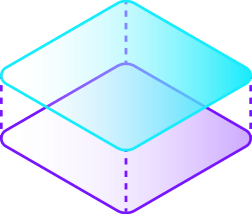
Sculpture is an art with rich historical origins, and embodies tradition and creativity in three-dimensional art forms that trace their origin back to ancient times. The oldest known sculpture dates back to about 32,000 BC when early humans created useful tools and distinguished them by carving attractive shapes that embody their culture and era.
A Long Artistic History
Over the centuries, sculpture has varied and developed with the art sculpture and different cultural influences, with the Stone Age sculpture personifying great figures for society. In ancient Egypt and Mesopotamia, sculpture was influenced by their religious and social culture, reflecting the strength of their society and civilization through giant sculptures made with construction and sculptural techniques that dazzled the world to this day. In ancient Greece and Rome, their sculptors respected the human body and this style took over the artistic community of the time.
A gilded wood statue of a queen named Tia. The year 1390 BC embodies the artistic culture of ancient Egypt.
Story of Saudi Arabia
Even in our beloved country, we found carved traces of civilizations that are gone and tools that generations have dealt with father and grandfather, thus deepening the cultural heritage of the various regions of the Kingdom. From ancient times, Madain Saleh represented a sculptural marvel, because it was able to embody the dazzling Nabatean civilization with more than 153 carved rock facades, qualifying it to become the first Saudi archaeological site to be registered in the list of World Heritage Sites.
Its historical depth did not depend on the Nabataean civilization, but rather the diversity of its embodiment of different cultures with inscriptions between the southern Arabic, the Lihyan, the Thamudian, the Nabataean, the Latin, and the Islamic, to make these inscriptions a memory and the foundations of great civilizations and a lasting artistic taste.
One of the entrances to the historical Madain Saleh
Trading & Seals
These carved inscriptions have been widespread since ancient times, when our first ancestors carved tablets of clay, metal, wax, and other materials, and even the identity of the members of society is fixed with unique stone seals, and this method is still used in southern Korea to this day! These carved seals do not prove the identity of persons and even the identity of commercial entities, and this proves their effects on bags of goods traded from a thousand years BC.
Transformation and Modernity
With the start of cultural movements in Europe and the rise of the humanities, human thought developed at a strange speed!
Innovations spread around the world and by 1450 Johann Gutenberg, the German inventor, was able to assemble the world's first printing press, starting an era of knowledge and spreading various sciences in various languages of the people of the earth.
Illustration of the shape of the first printer invented by Johann Gutenberg
New Horizons
The development of our current era has expanded the concept of 3D printing in art from two-dimensional products such as printing on paper and clothes to three-dimensional products built through printed layers to be accurate models.
Although the discovery of this large 3D printing technology was in the eighties, the world did not understand its possibilities until recently, and this indicates the development of the speed of 3D printing service bureau more than tens of times during the years 2015 and 2016 only!
These days, companies' perception of 3D sculpture technology has changed radically, initially a tool used by manufacturers and designers to build prototypes, but now it has moved from factories to large format 3d printing services, so printers can make jewelry, bags, and clothes, and even entered its applications in medicine and pharmacy, thus proving its potential, replacing long hours of hard manual work with creativity and intellectual ingenuity.
3D Sculpture and 3D printing
From the artists' point of view, custom 3D sculpture has emerged as an executive savior for their complex artworks, because it has removed resource and skill barriers and opened up new artistic opportunities that no one has discovered before!
3D printing artists have brought complex abstract models from the computer world to life, freeing designs from their digital constraints to produce useful tools used daily.
This technique did not affect artists but even sculptors and carpenters realized their dreams of creating integrated pieces without any nails and joints, such as the coffee table made by designers Gernot Oberville, Jean Vertel, and Matthias Barr with 3D printers for custom 3d sculpture because it is impossible to make by other traditional means.
Fractal T 3D printed table










